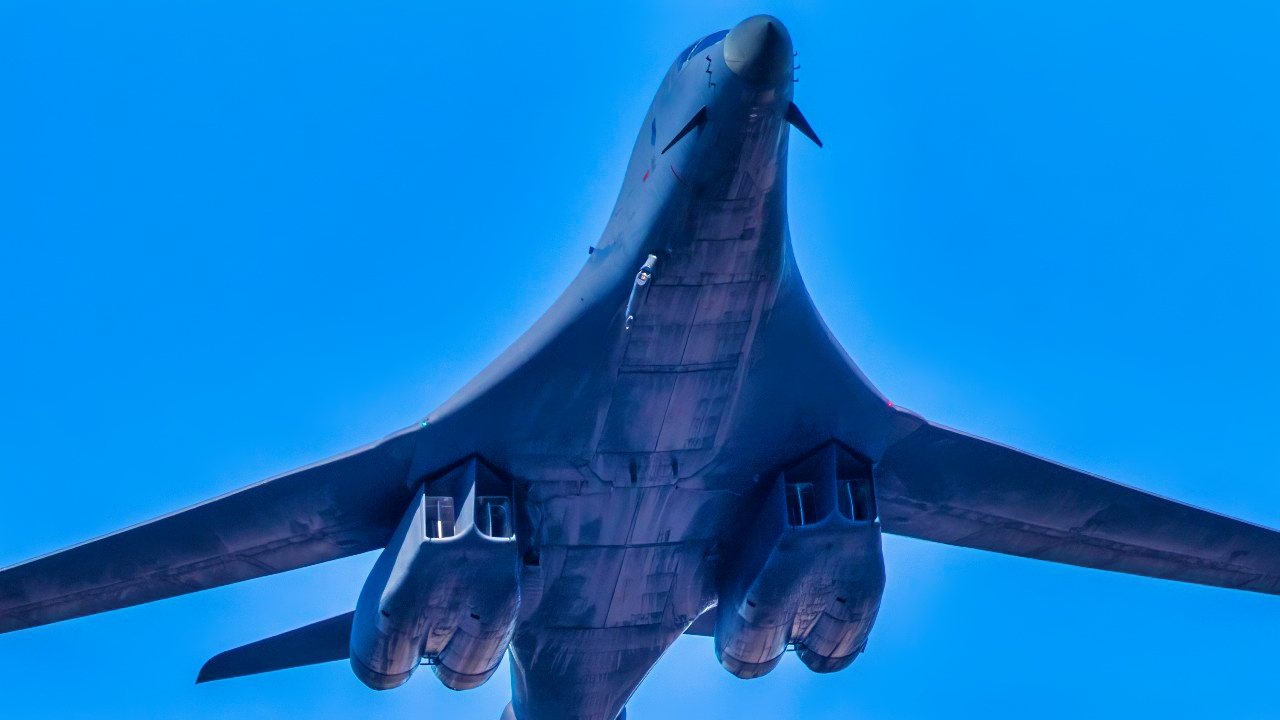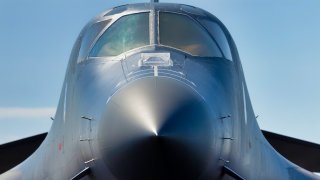B-1 Lancer: The Air Force Bomber That Is Literally Everywhere
The United States Air Force's Cold War era Rockwell B-1 Lancer long-range strategic bombers have been logging the miles already this year. The aircraft were employed earlier this month in the retaliatory strikes against Iranian-back militant groups in Iraq and Syria – flying from Texas and back.
B-1 Lancer Bombers Heading Back to Ellsworth - The United States Air Force's Cold War era Rockwell B-1 Lancer long-range strategic bombers have been logging the miles already this year. The aircraft were employed earlier this month in the retaliatory strikes against Iranian-back militant groups in Iraq and Syria – flying from Texas and back.
The B-1B aircraft and their crews of the 28th Bomb Wing hail from Ellsworth Air Force Base (AFB), South Dakota, but due to an ongoing investigation into a crash that occurred there earlier this year, the bombers were forced to relocate to Dyess AFB, Texas which served as the staging area for the sortie.
"I'm not surprised that the B-1s were chosen," Mark Gunzinger, a former command pilot who logged over 3,000 hours in the B-52 Stratofortress, told Business Insider. "The B-1 force is highly experienced at conducting attacks against those kinds of targets."
According to U.S. Central Command officials, the airstrikes employed more than 125 precision munitions. The facilities that were struck included command and control operations centers, intelligence centers, rockets, missiles, and unmanned aerial vehicle storages, and logistics and munition supply chain facilities of militia groups and their IRGC sponsors who facilitated attacks against U.S. and Coalition forces.
"Our Airmen demonstrated once again our ability to conduct long range precision strike missions when tasked to do so," said Col. Derek Oakley, 28th Bomb Wing commander. "Teaming with our fellow Strikers at Dyess to accomplish the mission is a testament to what we are able to do while further enhancing interoperability and improving our collective readiness."
B-1 Lancer: Heading Back to South Dakota
It was also last week that the Air Force announced it began to move the B-1 Lancer bombers back to Ellsworth AFB. The 28th Bomb Wing had moved its fleet of bombers to Dyess AFB on Jan. 25 so that missions could still be flown while investigators continued the search for a cause of the Jan. 4 crash on the base's only runway.
The wreckage of that bomber has been removed and taken to another location where the investigation into the crash continues. There has been no word on when the investigation might be completed.
The B-1 Keeps Flying
The B-1 supersonic bomber first entered service in the mid-1980s. It continues to be used to support the U.S. bomber presence in the Asia-Pacific region and to conduct close air support missions in U.S. operations around the world. Since the end of the Cold War, it does not carry nuclear weapons.
It was first employed in combat in Iraq in 1998.
After becoming the service's workhorse during the Global War on Terror (GWOT), time has taken a toll on the airframes and the B-1 will be retired as the B-21 Raider enters service later this decade. It was just a year ago that Air Force Global Strike Command retired the last of 17 B-1B bombers from its inventory, leaving a fleet of 45 aircraft that will serve until the new B-21 Raider stealth bomber is ready for duty, the command announced.

The B-1s have been described as being in "rough shape" after the heavy operational deployments in the Middle East between 2001 and 2014. Lawmakers in Washington have thus ordered the Air Force to maintain the current fleet, while the 2022 National Defense Authorization Act (NDAA) also prevented the service from cutting personnel from units that operate or maintain the Cold War-era warbirds.

The B-1 is expected to be retired in the next decade.
Author Experience and Expertise: Peter Suciu
Peter Suciu is a Michigan-based writer. He has contributed to more than four dozen magazines, newspapers, and websites with over 3,200 published pieces over a twenty-year career in journalism. He regularly writes about military hardware, firearms history, cybersecurity, politics, and international affairs. Peter is also a Contributing Writer for Forbes and Clearance Jobs. You can follow him on Twitter: @PeterSuciu. You can email the author: [email protected].
Image Credit: Shutterstock.


